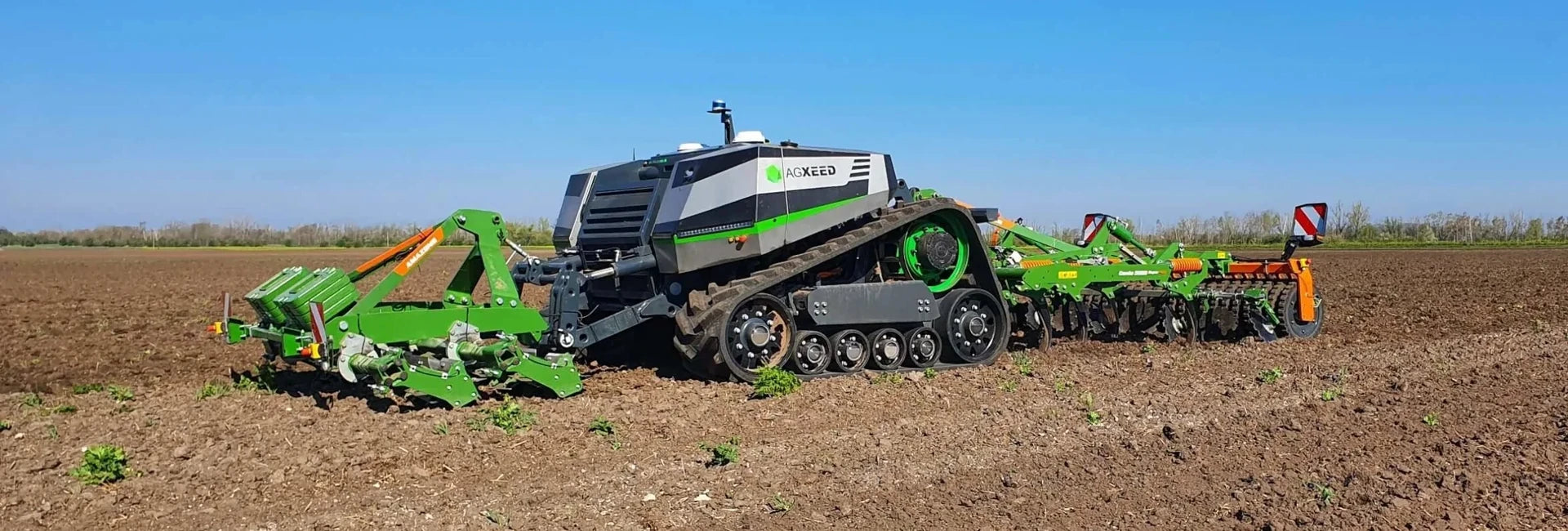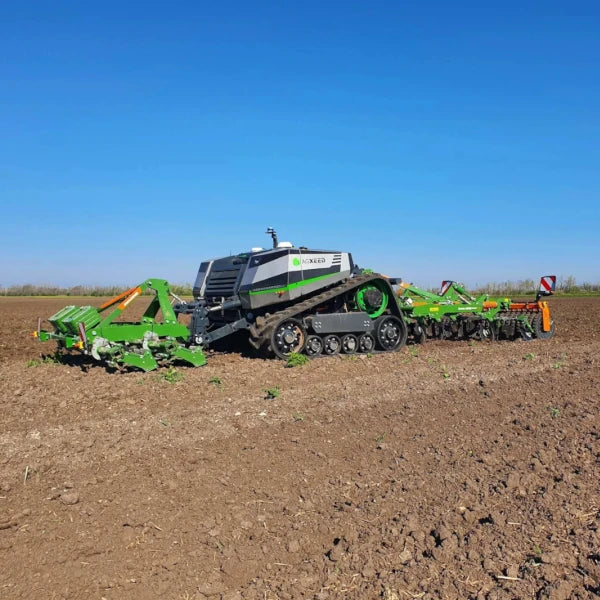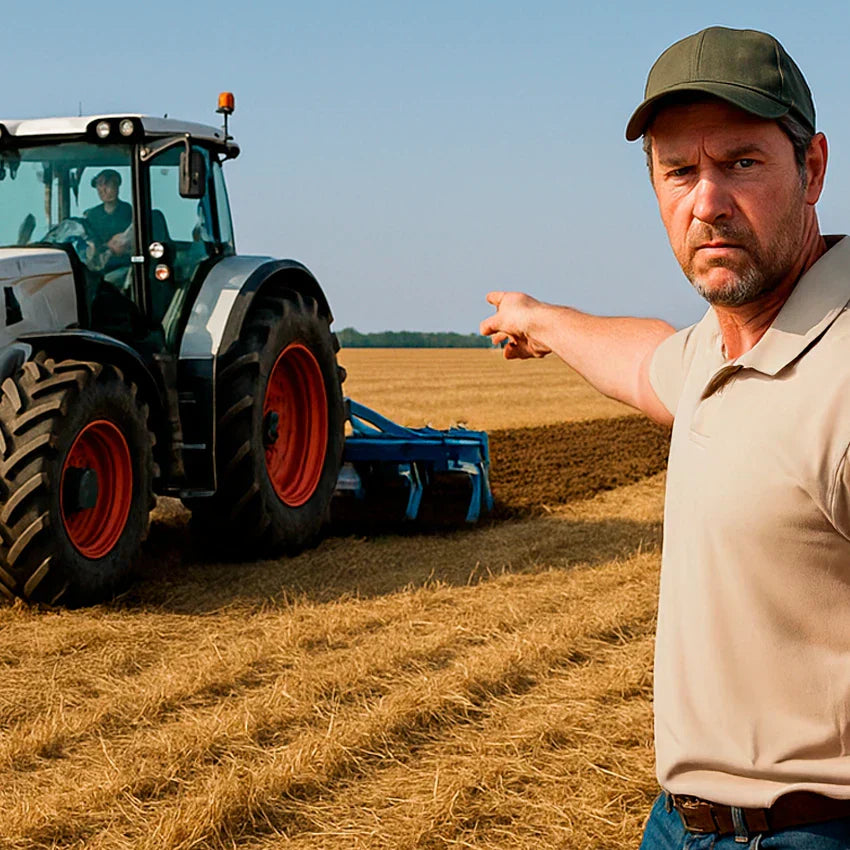Autonomous Tractors and Agricultural Robots: A Guide for 2025
Autonomous Agricultural Machines: The Future is Now
Have you heard of autonomous tractors, autonomous sprayers, or even agricultural robots that work with no operator in the cab?
This is no longer a futuristic vision. Agricultural automation is already in real operation across several regions of the world, transforming the way we plow, plant, spray, and harvest. Using artificial intelligence, advanced sensors, and high-precision navigation systems, these autonomous machines represent a new level of field efficiency.
In this article, you'll learn how this technology works, why it’s becoming indispensable, what models are available, how much it costs to invest in this innovation — and finally, how to prepare for this new era of agricultural mechanization.
Precision Agriculture: The Foundation of the Autonomous Revolution
The path to autonomous tractors began with precision agriculture. Since the 2000s, technologies such as GPS, sensors, yield maps, and variable rate applications have been increasing crop efficiency.
According to the USDA, more than 60% of farmers in the United States already use precision agriculture — a percentage that exceeds 80% on large farms. In Brazil, Embrapa estimates adoption at about 45% among large producers.
This technological foundation has brought significant gains: up to 30% savings in inputs and up to 20% increase in productivity. However, precision agriculture still requires trained operators. And it is precisely the shortage of skilled labor that is accelerating automation adoption in the field.
Labor Shortage: The Trigger for Automation
In the U.S., the average age of rural producers already exceeds 58 years. The demand for new workers reaches 2.4 million per year — and is not being met.
Meanwhile, Brazil is beginning to face similar challenges. Sectors such as sugarcane and crops like soybeans, corn, cotton, and citrus are struggling to find qualified operators to run modern tractors, harvesters, and sprayers.
In this scenario, the adoption of autonomous agricultural machines emerges as a natural solution: ensuring productivity even without available operators, maintaining task precision, and providing operational continuity.
How Autonomous Agricultural Machines Work
An autonomous tractor, automated harvester, autonomous sprayer, or other type of agricultural robot operates based on three pillars: sensors and actuators, connectivity, and artificial intelligence.
Sensors like LIDAR (Light Detection and Ranging) map the environment in 3D, detecting obstacles and preventing collisions in real-time. High-resolution cameras identify plants and adjust applications as needed. GPS systems with RTK correction ensure precise routes.
Meanwhile, connectivity with management platforms allows remote monitoring and real-time operational adjustments — reducing failures, optimizing resources, and increasing field efficiency.

Real Examples of Autonomous Machines in Operation
Major manufacturers and agtech startups already offer real and commercial solutions for agricultural automation. Here are some highlights:
- Burro: Robots that transport fruit boxes in fruit farming, optimizing manual harvesting.
- Bloomfield Robotics (Kubota): AI Solution with Sensors for Precise Identification of Pests and Diseases.
- GUSS Automation (John Deere): Autonomous sprayers for fruit farming, with anti-collision sensors and high repeatability.
- AgXeed: Offers the AgBot, an autonomous tractor for cultivation, sowing, and spraying, with low emission and continuous operation.
- PTx Trimble (AGCO): Retrofit kits to automate tractors like the Fendt 900 Vario and the John Deere 8R.
- ASI – Autonomous Solutions Inc. Pioneering in Autonomous Robotics, Mobius Platform, and Retrofit for Agro
- John Deere: Leads with the autonomous 8R, autonomous 9RX, and autonomous 5M models — the latter with an electric version planned for release.
- Raven (CNH Industrial): Integrated Agricultural Automation, Omnipower Platform, and Retrofit
Retrofit for Autonomous Tractors: Transforming Conventional Equipment
You don’t need to buy a brand-new tractor to automate your operation. With retrofit kits, it’s possible to turn a conventional tractor into an autonomous one.
The company BlueWhite, for instance, has already automated tractors that operate on more than 60,000 hectares of orchards in the U.S. and Israel. Its system installs in under a day and includes sensors, cameras, GPS, LIDAR, and an AI control module. It also maintains conventional use capability.
With this type of solution, the farmer can create routes, define tasks, and monitor everything remotely, with safety and high precision.

Investment and Financial Return
Prices are still high, especially for factory-ready models, but the results can be substantial. It’s important to note that the prices below reflect U.S. market conditions and may vary depending on country, model, and other factors:
- The autonomous John Deere 8R tractor costs between USD 500,000 and USD 600,000.
- Retrofit kits, such as those from BlueWhite, range between USD 50,000 and USD 70,000.
According to the Global Ag Tech Initiative, farms that adopted automation reduced operational costs by up to 50%, with return on investment occurring within 2 to 4 years — depending on crop and farm scale.
Training: The Human Factor Is Still Essential
Despite all the technological advancement, the human factor remains essential. Someone must be able to configure, supervise, and intervene in operations. Without trained operators, the technology cannot reach its full potential.
Werkey is the official online training platform for Fendt, Massey Ferguson, and Valtra brands in Brazil, offering professional training for operators of high-performance agricultural machinery. Soon, it will also offer specialized training on autonomous tractors, autonomous sprayers, and other emerging technologies in agriculture.
Investing in team training ensures safety, efficiency, and machine longevity.
Conclusion
Autonomous agriculture represents a profound transformation in agricultural mechanization. More than a trend, it’s a response to growing needs for productivity, precision, and continuity in the field — especially amid labor shortages.
Finally, before making any investment decisions, it’s most important to study, get informed, and understand deeply how these technologies work. Knowledge is the first step toward making conscious decisions and preparing your team for the future.
Keep following the Werkey Blog to stay updated on the innovations transforming agribusiness.










Leave a comment